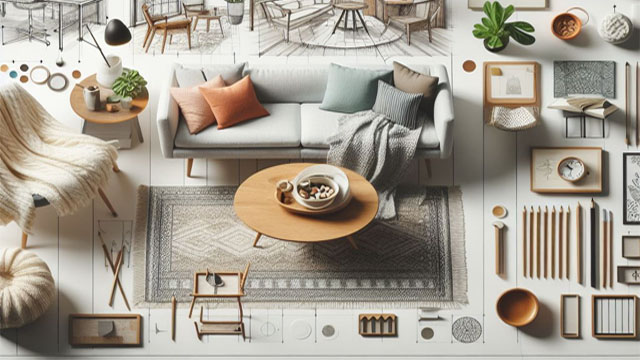Unlocking the Art of Interior Design: A Beginner's Guide
Embarking on the journey of interior design can be both exciting and daunting for beginners. The prospect of transforming a space into a harmonious blend of aesthetics and functionality is a thrilling endeavor. Whether you're moving into a new home, redecorating, or simply seeking a fresh perspective, this beginner's guide to interior design is your key to unlocking the secrets of creating a space that reflects your personality and suits your lifestyle.
1. Define Your Style Identity
Before diving into the world of interior design, take a moment to reflect on your personal style. Do you gravitate towards modern minimalism, classic elegance, or eclectic bohemian vibes? Understanding your preferences will serve as the foundation for all your design choices. Create a mood board with images, colors, and textures that resonate with you to help crystallize your style identity.
2. Understand the Basics of Color Theory
Colors play a pivotal role in setting the mood of a space. Familiarize yourself with the basics of color theory to make informed choices. Warm tones like reds and yellows can create a cozy atmosphere, while cool tones like blues and greens evoke a sense of tranquility. Experiment with different color combinations and consider the psychological impact each hue may have on your space.
3. Master the Art of Spatial Planning
Efficient spatial planning is the cornerstone of effective interior design. Begin by assessing the layout of your space and identifying focal points. Consider traffic flow, functionality, and the purpose of each area. Experiment with furniture arrangements and layouts until you find a balance that maximizes both aesthetics and practicality.
4. Furniture Selection and Placement
Investing in quality furniture is essential for creating a visually appealing and comfortable living space. When selecting furniture, consider the scale and proportion in relation to the room. Mix and match different pieces to add visual interest, but ensure there's a cohesive theme tying everything together. Don't forget to leave ample space for movement and ensure that furniture placement enhances the overall flow of the room.
5. Texture and Layering
Texture adds depth and dimension to a room, making it more visually interesting. Experiment with different textures through fabrics, rugs, and decor elements. Layering is an art that involves combining different textures and materials harmoniously. For instance, pair a plush sofa with sleek metallic accents or soft rugs with rough-hewn wooden furniture to create a balanced and inviting space.
6. Let There Be Light
Lighting is a powerful tool in interior design. Natural light is ideal, but strategically placed artificial lighting can enhance the ambiance. Experiment with a mix of ambient, task, and accent lighting to create layers of illumination. Consider the functionality of each area and choose lighting fixtures that complement the overall design scheme.
7. Personalize with Decor Accents
Decor accents are the finishing touches that inject personality into your space. Whether it's artwork, throw pillows, or decorative objects, choose items that resonate with your style. Be mindful not to overcrowd the space; instead, curate a collection of meaningful pieces that tell your story.
8. Embrace the Power of Greenery
Plants bring life and freshness to any interior. Experiment with different types of indoor plants to add a touch of nature to your space. Not only do plants enhance the visual appeal, but they also contribute to a healthier indoor environment.
9. Stay Inspired and Evolve
Interior design is a dynamic field that evolves with trends and personal growth. Stay inspired by following design blogs, attending home decor exhibitions, and exploring the works of renowned designers. Remember that your space is a reflection of your journey, so allow it to evolve over time as your tastes and preferences change.
beginners guide to interior design - Embarking on your interior design journey may seem overwhelming, but with this beginner's guide as your compass, you're well-equipped to turn your living space into a canvas of self-expression and comfort. Happy designing!

